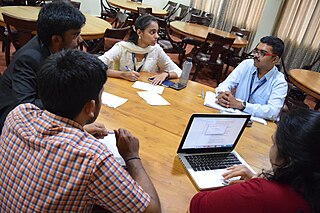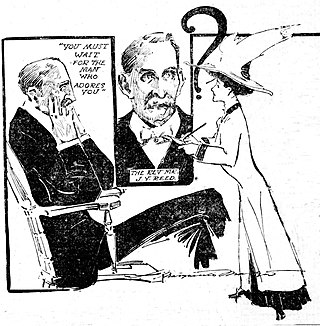
A focus group is a group interview involving a small number of demographically similar people or participants who have other common traits/experiences. Their reactions to specific researcher/evaluator-posed questions are studied. Focus groups are used in market research to understand better people's reactions to products or services or participants' perceptions of shared experiences. The discussions can be guided or open. In market research, focus groups can explore a group's response to a new product or service. As a program evaluation tool, they can elicit lessons learned and recommendations for performance improvement. The idea is for the researcher to understand participants' reactions. If group members are representative of a larger population, those reactions may be expected to reflect the views of that larger population. Thus, focus groups constitute a research or evaluation method that researchers organize to collect qualitative data through interactive and directed discussions.
Cross-cultural communication is a field of study investigating how people from differing cultural backgrounds communicate, in similar and different ways among themselves, and how they endeavor to communicate across cultures. Intercultural communication is a related field of study.

An interview is a structured conversation where one participant asks questions, and the other provides answers. In common parlance, the word "interview" refers to a one-on-one conversation between an interviewer and an interviewee. The interviewer asks questions to which the interviewee responds, usually providing information. That information may be used or provided to other audiences immediately or later. This feature is common to many types of interviews – a job interview or interview with a witness to an event may have no other audience present at the time, but the answers will be later provided to others in the employment or investigative process. An interview may also transfer information in both directions.
Qualitative marketing research involves a natural or observational examination of the philosophies that govern consumer behavior. The direction and framework of the research is often revised as new information is gained, allowing the researcher to evaluate issues and subjects in an in-depth manner. The quality of the research produced is heavily dependent on the skills of the researcher and is influenced by researcher bias.

Qualitative psychological research is psychological research that employs qualitative methods.

In its most common sense, methodology is the study of research methods. However, the term can also refer to the methods themselves or to the philosophical discussion of associated background assumptions. A method is a structured procedure for bringing about a certain goal, like acquiring knowledge or verifying knowledge claims. This normally involves various steps, like choosing a sample, collecting data from this sample, and interpreting the data. The study of methods concerns a detailed description and analysis of these processes. It includes evaluative aspects by comparing different methods. This way, it is assessed what advantages and disadvantages they have and for what research goals they may be used. These descriptions and evaluations depend on philosophical background assumptions. Examples are how to conceptualize the studied phenomena and what constitutes evidence for or against them. When understood in the widest sense, methodology also includes the discussion of these more abstract issues.
Intercultural communication is a discipline that studies communication across different cultures and social groups, or how culture affects communication. It describes the wide range of communication processes and problems that naturally appear within an organization or social context made up of individuals from different religious, social, ethnic, and educational backgrounds. In this sense, it seeks to understand how people from different countries and cultures act, communicate, and perceive the world around them. Intercultural communication focuses on the recognition and respect of those with cultural differences. The goal is mutual adaptation between two or more distinct cultures which leads to biculturalism/multiculturalism rather than complete assimilation. It promotes the development of cultural sensitivity and allows for empathic understanding across different cultures.

Personnel selection is the methodical process used to hire individuals. Although the term can apply to all aspects of the process the most common meaning focuses on the selection of workers. In this respect, selected prospects are separated from rejected applicants with the intention of choosing the person who will be the most successful and make the most valuable contributions to the organization. Its effect on the group is discerned when the selected accomplish their desired impact to the group, through achievement or tenure. The procedure of selection takes after strategy to gather data around a person so as to figure out whether that individual ought to be utilized. The strategies used must be in compliance with the various laws in respect to work force selection.

A job interview is an interview consisting of a conversation between a job applicant and a representative of an employer which is conducted to assess whether the applicant should be hired. Interviews are one of the most common methods of employee selection. Interviews vary in the extent to which the questions are structured, from an unstructured and informal conversation to a structured interview in which an applicant is asked a predetermined list of questions in a specified order; structured interviews are usually more accurate predictors of which applicants will make suitable employees, according to research studies.
A structured interview is a quantitative research method commonly employed in survey research. The aim of this approach is to ensure that each interview is presented with exactly the same questions in the same order. This ensures that answers can be reliably aggregated and that comparisons can be made with confidence between sample sub groups or between different survey periods.

Intercultural learning is an area of research, study and application of knowledge about different cultures, their differences and similarities. On the one hand, it includes a theoretical and academic approach. On the other hand, it comprises practical applications such as learning to negotiate with people from different cultures, living with people from different cultures, living in a different culture and the prospect of peace between different cultures.
A self-report study is a type of survey, questionnaire, or poll in which respondents read the question and select a response by themselves without any outside interference. A self-report is any method which involves asking a participant about their feelings, attitudes, beliefs and so on. Examples of self-reports are questionnaires and interviews; self-reports are often used as a way of gaining participants' responses in observational studies and experiments.
Cognitive pretesting, or cognitive interviewing, is a field research method where data is collected on how the subject answers interview questions. It is the evaluation of a test or questionnaire before it's administered. It allows survey researchers to collect feedback regarding survey responses and is used in evaluating whether the question is measuring the construct the researcher intends. The data collected is then used to adjust problematic questions in the questionnaire before fielding the survey to the full sample of people.
Cultural competence, also known as intercultural competence, is a range of cognitive, affective, behavioural, and linguistic skills that lead to effective and appropriate communication with people of other cultures. Intercultural or cross-cultural education are terms used for the training to achieve cultural competence.
Person-centered ethnography is an approach within psychological anthropology that draws on techniques and theories from psychiatry and psychoanalysis to understand how individuals relate to and interact with their sociocultural context. The term was first used by Robert I. Levy, a psychoanalytically trained psychiatrist, to describe his psychodynamically informed approach to interviewing during his anthropological fieldwork in Tahiti and Nepal.

An unstructured interview or non-directive interview is an interview in which questions are not prearranged. These non-directive interviews are considered to be the opposite of a structured interview which offers a set amount of standardized questions. The form of the unstructured interview varies widely, with some questions being prepared in advance in relation to a topic that the researcher or interviewer wishes to cover. They tend to be more informal and free flowing than a structured interview, much like an everyday conversation. Probing is seen to be the part of the research process that differentiates the in-depth, unstructured interview from an everyday conversation. This nature of conversation allows for spontaneity and for questions to develop during the course of the interview, which are based on the interviewees' responses. The chief feature of the unstructured interview is the idea of probe questions that are designed to be as open as possible. It is a qualitative research method and accordingly prioritizes validity and the depth of the interviewees' answers. One of the potential drawbacks is the loss of reliability, thereby making it more difficult to draw patterns among interviewees' responses in comparison to structured interviews. Unstructured interviews are used in a variety of fields and circumstances, ranging from research in social sciences, such as sociology, to college and job interviews. Fontana and Frey have identified three types of in depth, ethnographic, unstructured interviews - oral history, creative interviews, and post-modern interviews.

Phenomenography is a qualitative research methodology, within the interpretivist paradigm, that investigates the qualitatively different ways in which people experience something or think about something. It is an approach to educational research which appeared in publications in the early 1980s. It initially emerged from an empirical rather than a theoretical or philosophical basis.
An online interview is an online research method conducted using computer-mediated communication (CMC), such as instant messaging, email, or video. Online interviews require different ethical considerations, sampling and rapport than practices found in traditional face-to-face (F2F) interviews. Online interviews are separated into synchronous online interviews, for example via online chat which happen in 'real time' online and asynchronous online interviews, for example via email conducted in non-real time. Some authors discuss online interviews in relation to online focus groups whereas others look at online interviews as separate research methods. This article will only discuss online interviews.

A couple interview is a method of qualitative research used in the social sciences, where two spouses are interviewed together. Such an interview is typically semi-structured or unstructured. Couple interviews are important in household research, often from a psychological, sociological, anthropological or social geographical perspective, and are also frequently used within health research. A couple interview is a form of joint interviewing, the subject of a growing methodological research literature.

An interview in qualitative research is a conversation where questions are asked to elicit information. The interviewer is usually a professional or paid researcher, sometimes trained, who poses questions to the interviewee, in an alternating series of usually brief questions and answers. They can be contrasted with focus groups in which an interviewer questions a group of people and observes the resulting conversation between interviewees, or surveys which are more anonymous and limit respondents to a range of predetermined answer choices. In addition, there are special considerations when interviewing children. In phenomenological or ethnographic research, interviews are used to uncover the meanings of central themes in the life world of the subjects from their own point of view.








